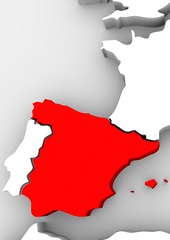Comparing Spain and France: 10 Points
Is Spain really doing that much worse than France?
July 15, 2013

Spain’s economy requires support from its European partners. But it also deserves that support because the government has been sincere in its structural reform efforts in a way that has not been true of some member states. As a companion to his article Why Spain’s Economy Deserves Support, Guillermo de la Dehesa compares and contrasts the state of Spain’s economy and reform efforts with those of France.
1.Spain has accumulated much larger imbalances than France since the financial crisis of 2008 and Europe’s subsequent recession. As a result, Spain needs to make larger and deeper reforms than France.
2.According to the IMF and the European Commission, Spain will end up suffering a compound recession. Between 2009 and the end of 2013, Spain’s GDP has fallen by 6.6 percentage points. Over the same period, France’s GDP is down only 3.0 percentage points — less than half the drop in Spain.
3.Spain will not catch up anytime soon. In 2014, the country’s economy is expected to grow at a rate of 0.4-0.5% a year, compared to 0.7-0.8% in France. The IMF projects that, in 2018, Spain’s economy will grow 1.6%, while France’s will expand by 1.9%.
4.On a positive note, Spain’s foreign rebalancing is proceeding at a faster rate than France’s. By 2018, the country’s current account surplus is projected to equal 3.6% of GDP, compared to 2.6% in 2013 and to -9.6% in 2007. Meanwhile, France’s deficit of 1.3% of GDP in 2013 is expected to worsen slightly to 1.4% of GDP next year, before ending up in balance in 2018.
5.However, Spain’s unemployment is about two and a half times higher than France’s (27% versus 10.8%). This chronic level of unemployment — second only to Greece in the Eurozone — is directly a result of the country’s failed structural labor market design.
6.The French government’s budget deficit was equal to 3.6% of GDP in 2012. This is expected to improve in 2013 and 2014 to 2.9% and 2.6%, respectively, below the 3% threshold required by the Maastricht Treaty. Spain’s budget deficit reached 7% of GDP in 2012 and is expected to fall below the Maastricht target in 2016 (-2.7%), three years later.
7.In terms of overall debt, the countries’ are not all that different: Spain’s general government debt will reach 91.4% of GDP this year and 96.8% in 2014. French government debt will be just slightly higher, at 94.6% of GDP this year and 97.2% next year.
8.However, France is a richer country than Spain — and not just in terms of per capita GDP (France’s €31,100 is 37% higher than Spain’s €22,700). More important, France is richer than Spain in terms of per capita capital stock (€116,000 versus €80,000). These advantages will make it easier for France to recover from its recession and reduce its deficit and debt levels.
9.By contrast, Spain is doing better in its external sector than France. According to the European Commission, Spain will export a higher share of GDP than France both in 2013 (33.7% of GDP compared to 28.2%) and in 2014 (35.2% and 29.2%).
10.Finally, it looks as if Spain — in exchange for short-term leniency on fiscal contraction, given its high fiscal multipliers — is the country more inclined to take this opportunity to make as many structural reforms as possible in order to achieve faster growth in the medium term. France, on the other hand, does not seem to be as ready to undertake reforms.
Read Guillermo de la Dehesa’s essay Why Spain’s Economy Deserves Support.
Read previous

Why Spain’s Economy Deserves Support
July 15, 2013
